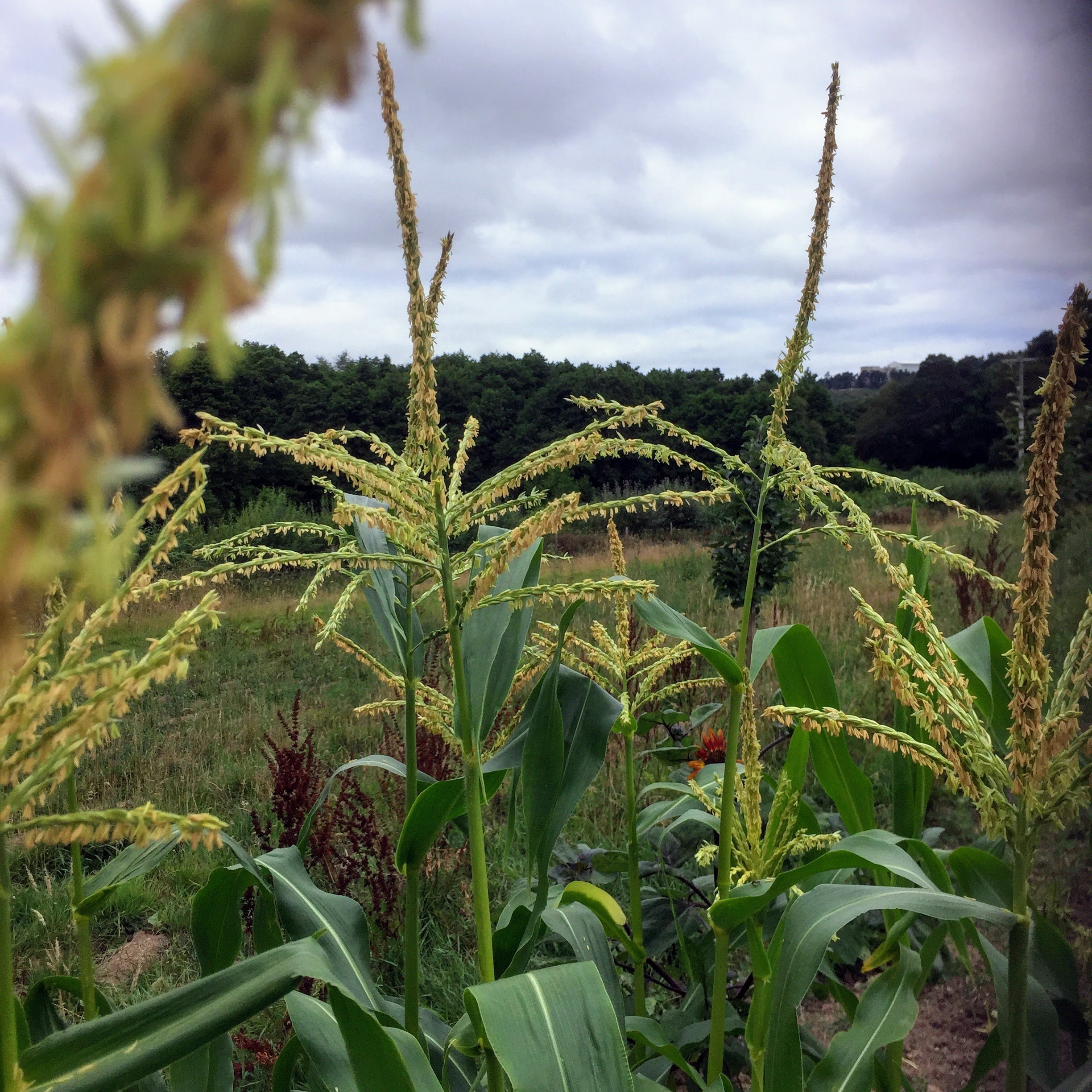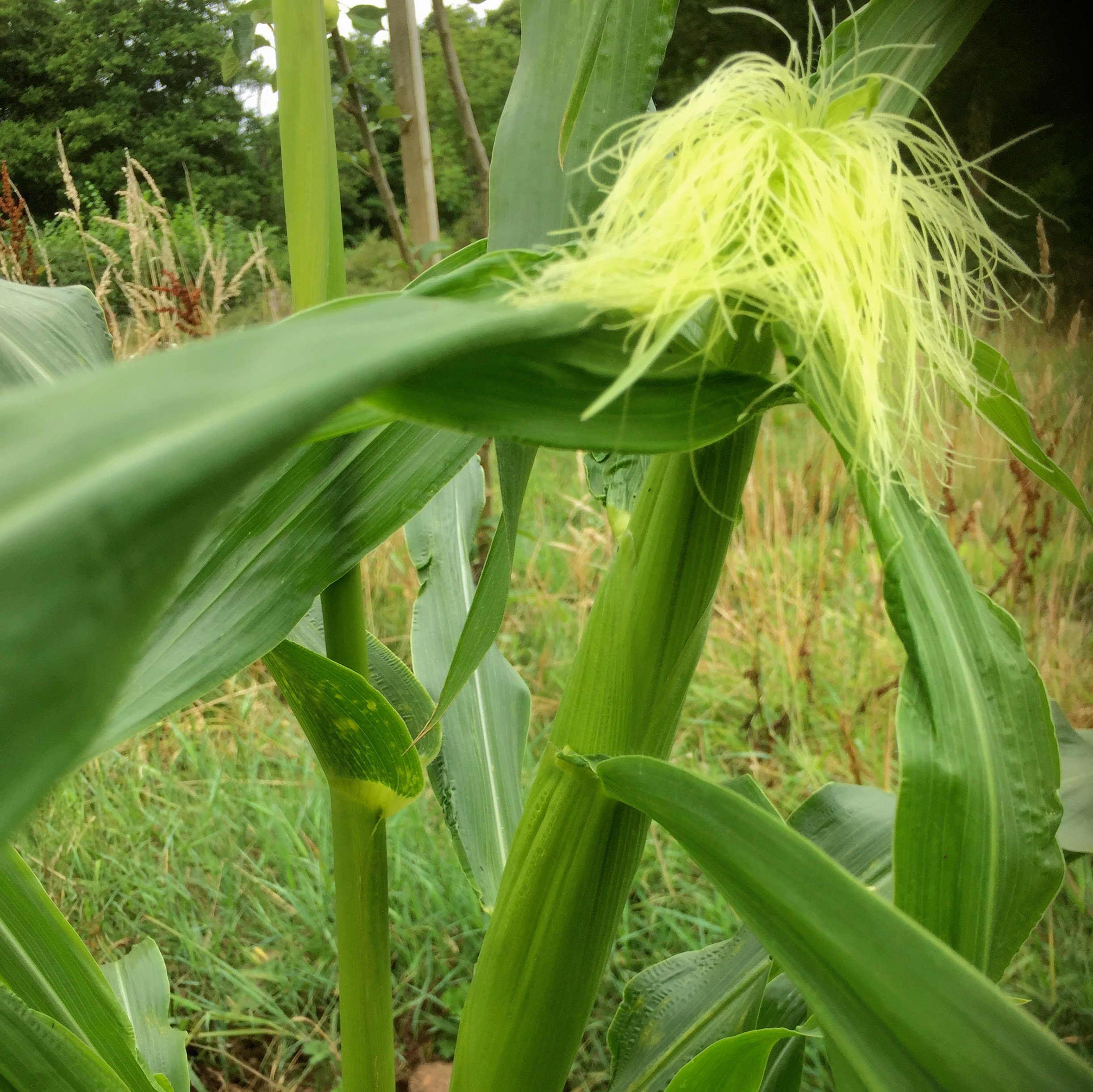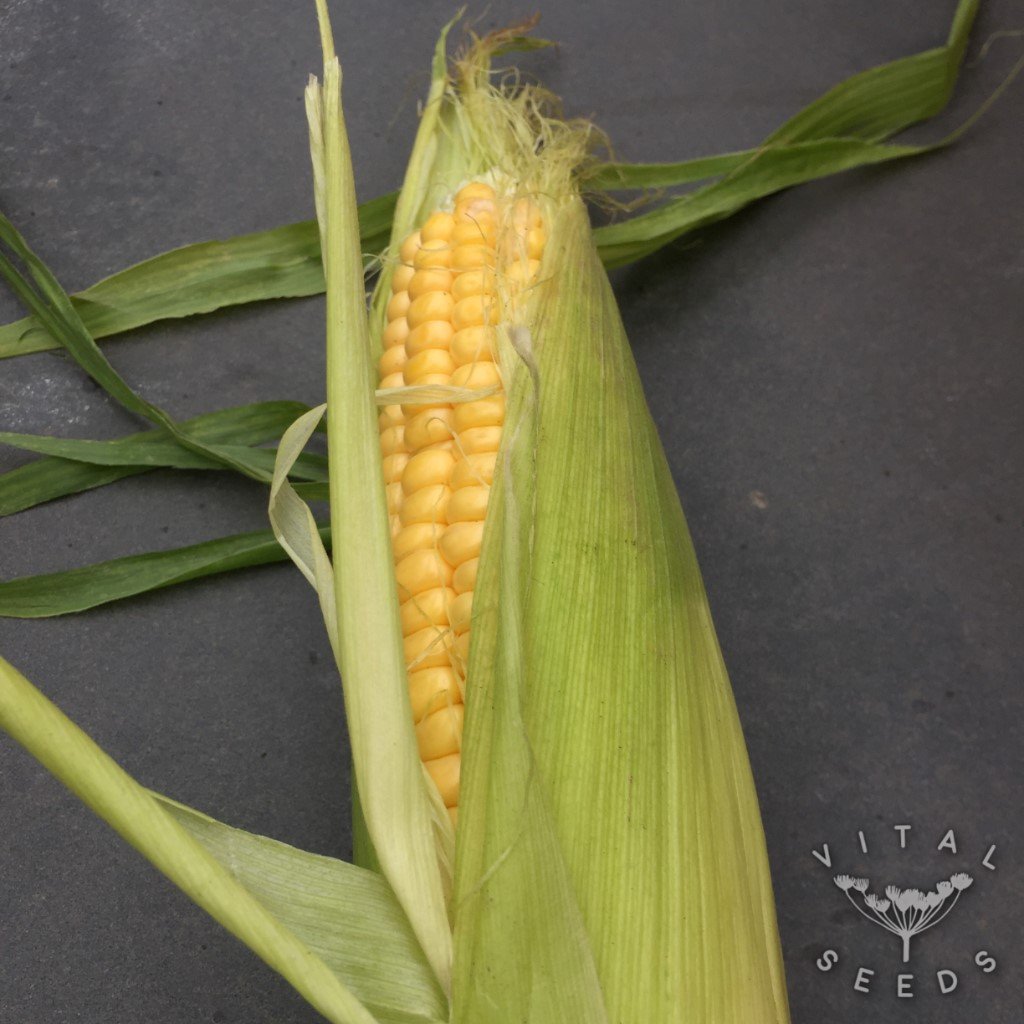Sweetcorn – Golden Bantam (Organic)
£1.90 – £4.00
The most popular open-pollinated sweetcorn variety since it was introduced in 1902 suitable for eating fresh and freezing. A tall vigorous plant making 18cm long cobs full of medium sweet, rich, delicious kernels when harvested ‘milk-ripe’. Best eaten or processed on the day of harvest for full flavour and before the sugars turn into starch.
(Approximate seed count – 50)

| Month | J | F | M | A | M | J | J | A | S | O | N | D | ||||||||||||
|---|---|---|---|---|---|---|---|---|---|---|---|---|---|---|---|---|---|---|---|---|---|---|---|---|
| Sow | ||||||||||||||||||||||||
| Plant | ||||||||||||||||||||||||
| Harvest | ||||||||||||||||||||||||
Seed Sowing
Sow seeds indoors in pots or large modules from April. Place two seeds in each pot and remove the less vigorous one. Don’t overwater the germinating seeds, as they can rot if kept soggy. Alternatively, direct sow in May in the final growing position; place 2-3 seeds in pre-dibbed 3 cm deep holes at 40 cm apart and thin to one plant per station. Early crops benefit from fleece to protect them from the cold.
Transplanting
Transplant your seedlings into their final growing position around mid-May when the risk of frost has passed, and the soil has warmed. Seedlings will benefit from hardening off before transplanting. Ensure the area is weed-free and add plenty of organic matter before planting. Sweetcorn is wind-pollinated, so it is better planted in a block rather than in long thin rows. Plant seedlings 40 cm apart.
Plant Care
Sweetcorn does best in a sunny position and in rich soil with plenty of organic matter. Keep well-watered while young and again once flower tassels are showing until cobs are harvested. You can mulch with compost to help retain water and prevent weed growth. Alternatively, you can plant squash under your corn as they do well together.
Challenges
Rodents, squirrels, and badgers love corn; use netting to protect from rodents. Consider installing a fence to keep the badgers away. Poor pollination can result in incomplete cobs, shake the stalks gently during the flowering period to encourage pollen distribution.
Harvest
Regular monitoring and observation are key to identifying the optimal harvest window for your sweetcorn crop. Once the tassels turn brown, the kernels will be forming. Run your fingers along the length of the corn; the cob should feel full and well-developed when ready. Gently peel back the outer leaves and pop a kernel, it should be milky rather than watery. Best eaten soon after harvest before the sugars turn to starch which happens quickly. The first cob of the season is best eaten immediately for optimal sweetness.
Culinary Ideas
Roasting, grilling, steaming, or barbecuing sweetcorn inside their husks will steam them beautifully; you can also freeze them inside their husks for later use. Charring on a BBQ and smothered with butter and salt is summer perfection. The silk tassels can be made into a sweet tea, and the leaves can be used to wrap tamales, making the most of the whole plant.
Seed Saving
To save sweetcorn seeds, use an open-pollinated variety and ensure there is no maize growing within 800 m. Grow at least 50 plants to maintain healthy genetic variety within your population. Select the best plants with preferred characteristics and let the cobs mature fully, well beyond the harvest stage for eating and dry out. The kernels should become wrinkled, hard and look glassy. Rub them off the cob and store in a cool, dry place.



